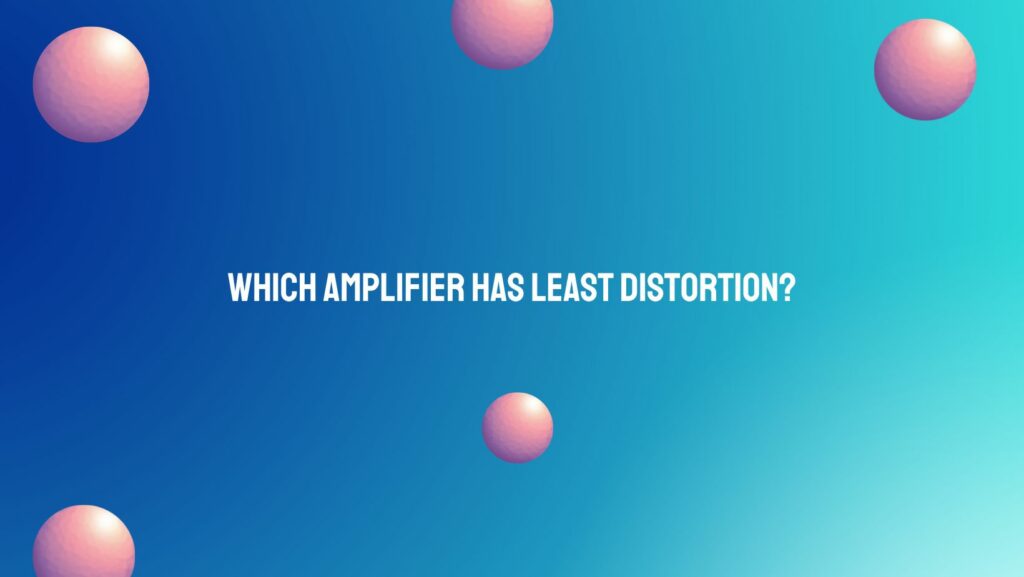For audiophiles and discerning musicians alike, the pursuit of an amplifier with minimal distortion is a quest for sonic purity. In the world of amplification, where harmonic coloration and tonal nuances play a pivotal role, finding an amplifier with the least distortion becomes a pursuit of sonic excellence. In this article, we’ll explore the characteristics of amplifiers renowned for their low distortion, offering a transparent canvas for the truest representation of the audio signal.
- Solid-State Amplifiers:
Solid-state amplifiers are often lauded for their ability to deliver a clean and transparent signal with minimal distortion. Unlike their tube counterparts, solid-state amplifiers use transistors and other semiconductor components to amplify the signal. Brands like Mark Levinson and Bryston have gained recognition for their solid-state designs that prioritize accuracy and low distortion, making them favorites in the realm of high-fidelity audio.
- Class-D Amplifiers:
Class-D amplifiers, also known as switching amplifiers, have gained popularity for their efficiency and low heat generation, but they also excel in minimizing distortion. Brands like Hypex and ICEpower have produced Class-D amplifier modules known for their remarkable fidelity. The digital nature of Class-D amplifiers allows for precise signal reproduction with minimal coloration, making them an attractive choice for audio enthusiasts seeking transparency.
- Benchmark in Transparency:
The Benchmark AHB2 amplifier stands out as a benchmark in the pursuit of minimal distortion. Renowned for its exceptionally low levels of harmonic and intermodulation distortion, the AHB2 utilizes advanced engineering and meticulous design to faithfully reproduce the audio signal. This amplifier is a testament to the possibilities of achieving transparency without sacrificing power or dynamics.
- Tube Amplifiers with Low Distortion:
While tube amplifiers are often associated with harmonic richness and coloration, some designs prioritize low distortion without compromising the inherent warmth of tubes. Brands like VAC (Valve Amplification Company) have created tube amplifiers that focus on maintaining the purity of the audio signal, appealing to those who value the sonic characteristics of tubes but seek a more pristine reproduction.
- High-End Audio Preamplifiers:
In the pursuit of low distortion, the preamplifier plays a crucial role. High-end audio preamplifiers from companies like Pass Labs and Audio Research are designed with meticulous attention to detail, ensuring that the signal remains unaltered as it passes through the amplification chain. These preamplifiers contribute to an overall system with minimal distortion and maximum fidelity.
Conclusion:
The quest for an amplifier with the least distortion is a noble pursuit for audiophiles and musicians who prioritize sonic accuracy and transparency. Whether it’s the precision of solid-state amplifiers, the efficiency of Class-D designs, the transparency of benchmark amplifiers, or the refined balance of certain tube designs, the options are vast and diverse. As technology advances and engineering innovations continue, the landscape of amplifiers with minimal distortion expands, inviting enthusiasts to experience the truest essence of their favorite music with unparalleled clarity.


